BMW X1 vs Jaguar F-Pace - Differences and prices compared
Costs and Efficiency:
Looking at overall running costs, both models reveal some interesting differences in everyday economy.
BMW X1 has a convincingly advantage in terms of price – it starts at 38200 £, while the Jaguar F-Pace costs 56400 £. That’s a price difference of around 18172 £.
Fuel consumption also shows a difference: Jaguar F-Pace manages with 1.80 L and is therefore evident more efficient than the BMW X1 with 2.50 L. The difference is about 0.70 L per 100 km.
As for range, the BMW X1 performs evident better – achieving up to 81 km, about 17 km more than the Jaguar F-Pace.
Engine and Performance:
Power, torque and acceleration are the classic benchmarks for car enthusiasts – and here, some clear differences start to show.
When it comes to engine power, the Jaguar F-Pace has a decisively edge – offering 575 HP compared to 326 HP. That’s roughly 249 HP more horsepower.
In acceleration from 0 to 100 km/h, the Jaguar F-Pace is clearly perceptible quicker – completing the sprint in 4 s, while the BMW X1 takes 5.40 s. That’s about 1.40 s faster.
In terms of top speed, the Jaguar F-Pace performs to a small extent better – reaching 286 km/h, while the BMW X1 tops out at 250 km/h. The difference is around 36 km/h.
There’s also a difference in torque: Jaguar F-Pace pulls clearly perceptible stronger with 700 Nm compared to 477 Nm. That’s about 223 Nm difference.
Space and Everyday Use:
Cabin size, boot volume and payload all play a role in everyday practicality. Here, comfort and flexibility make the difference.
Seats: offers more seating capacity – vs .
In curb weight, BMW X1 is noticeable lighter – 1575 kg compared to 1951 kg. The difference is around 376 kg.
In terms of boot space, the BMW X1 offers to a small extent more room – 540 L compared to 470 L. That’s a difference of about 70 L.
In maximum load capacity, the BMW X1 performs somewhat better – up to 1600 L, which is about 172 L more than the Jaguar F-Pace.
When it comes to payload, Jaguar F-Pace to a small extent takes the win – 589 kg compared to 500 kg. That’s a difference of about 89 kg.
Who wins the race?
The Jaguar F-Pace proves to be is largely superior and therefore becomes our DriveDuel Champion!
Jaguar F-Pace is the better all-rounder in this comparison.
 @ Jaguar Land Rover Media
@ Jaguar Land Rover Media
Jaguar F-Pace
Costs and Consumption
View detailed analysis
Engine and Performance
View detailed analysis
Dimensions and Body
View detailed analysis
BMW X1
The BMW X1 brings a premium feel to compact crossover life, wrapping practical space and agile handling into a tidy, upscale package. It’s ideal for buyers who want BMW driving dynamics without the bulk, offering everyday comfort and a few clever tricks to keep the commute interesting.
details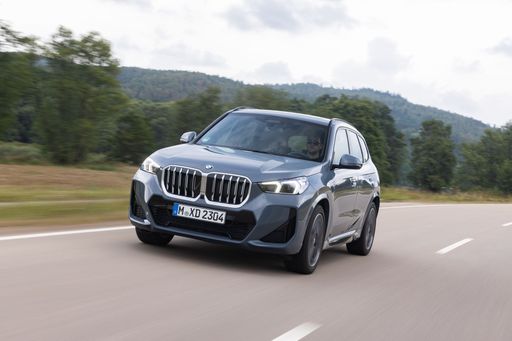 @ BMW Group Press
@ BMW Group Press
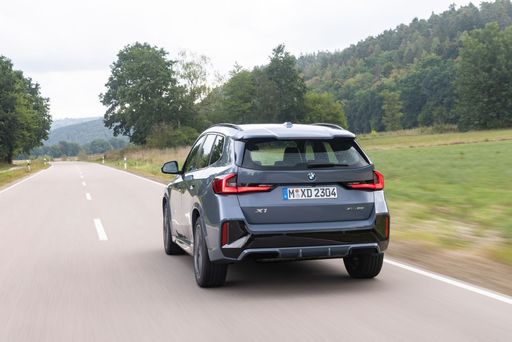 @ BMW Group Press
@ BMW Group Press
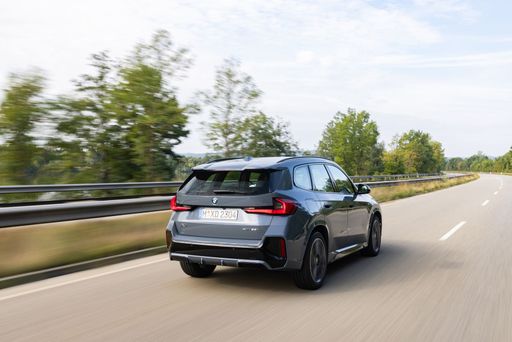 @ BMW Group Press
@ BMW Group Press
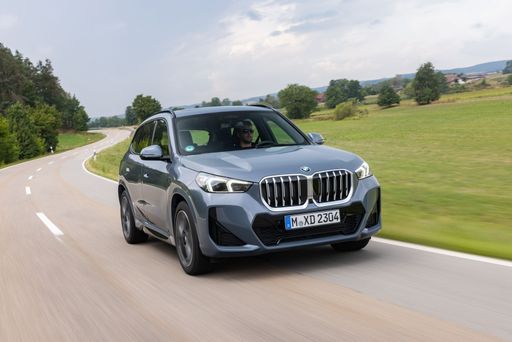 @ BMW Group Press
@ BMW Group Press
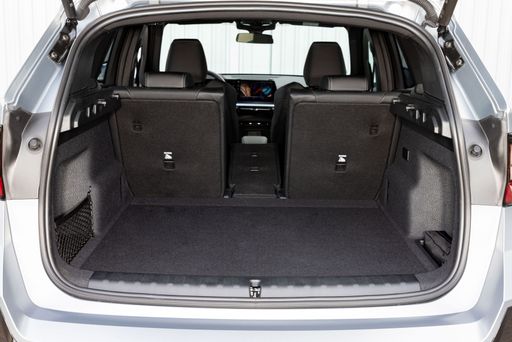 @ BMW Group Press
@ BMW Group Press
Jaguar F-Pace
Jaguar F-Pace blends the prowling presence of a sports car with the practicality of an SUV, looking elegant while rewarding drivers with lively handling. If you crave something that feels special every time you climb in and prefer style and driving flair over blending into the parking lot, the F-Pace is a classy, slightly cheeky alternative to the usual German suspects.
details @ Jaguar Land Rover Media
@ Jaguar Land Rover Media
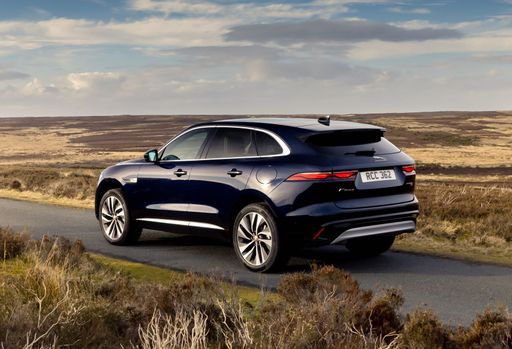 @ Jaguar Land Rover Media
@ Jaguar Land Rover Media
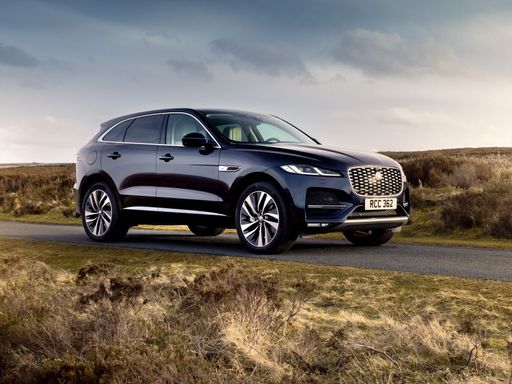 @ Jaguar Land Rover Media
@ Jaguar Land Rover Media
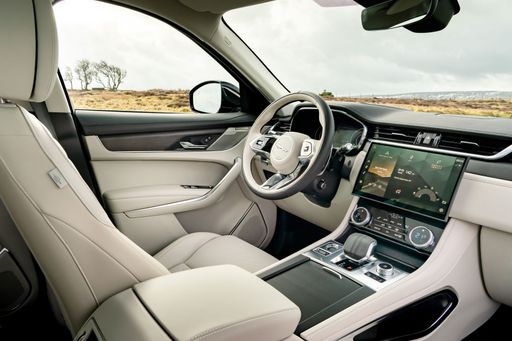 @ Jaguar Land Rover Media
@ Jaguar Land Rover Media
 @ Jaguar Land Rover Media
@ Jaguar Land Rover Media
 @ BMW Group Press
@ BMW Group Press
|
 @ Jaguar Land Rover Media
@ Jaguar Land Rover Media
|
|
|
|
Costs and Consumption |
|
|---|---|
|
Price
38200 - 55500 £
|
Price
56400 - 100800 £
|
|
Consumption L/100km
2.5 - 7.7 L
|
Consumption L/100km
1.8 - 12 L
|
|
Consumption kWh/100km
-
|
Consumption kWh/100km
-
|
|
Electric Range
81 km
|
Electric Range
64 km
|
|
Battery Capacity
14.20 kWh
|
Battery Capacity
15.40 kWh
|
|
co2
57 - 175 g/km
|
co2
41 - 274 g/km
|
|
Fuel tank capacity
47 - 54 L
|
Fuel tank capacity
62 - 83 L
|
Dimensions and Body |
|
|---|---|
|
Body Type
SUV
|
Body Type
SUV
|
|
Seats
5
|
Seats
5
|
|
Doors
5
|
Doors
5
|
|
Curb weight
1575 - 1935 kg
|
Curb weight
1951 - 2230 kg
|
|
Trunk capacity
490 - 540 L
|
Trunk capacity
354 - 470 L
|
|
Length
4500 - 4505 mm
|
Length
4747 - 4762 mm
|
|
Width
1845 mm
|
Width
1936 mm
|
|
Height
1622 - 1642 mm
|
Height
1664 - 1670 mm
|
|
Max trunk capacity
1495 - 1600 L
|
Max trunk capacity
1299 - 1428 L
|
|
Payload
490 - 500 kg
|
Payload
457 - 589 kg
|
Engine and Performance |
|
|---|---|
|
Engine Type
Diesel MHEV, Petrol MHEV, Petrol, Diesel, Plugin Hybrid
|
Engine Type
Diesel MHEV, Petrol MHEV, Plugin Hybrid, Petrol
|
|
Transmission
Automatic
|
Transmission
Automatic
|
|
Transmission Detail
Dual-Clutch Automatic
|
Transmission Detail
Automatic Gearbox
|
|
Drive Type
Front-Wheel Drive, All-Wheel Drive
|
Drive Type
All-Wheel Drive
|
|
Power HP
136 - 326 HP
|
Power HP
163 - 575 HP
|
|
Acceleration 0-100km/h
5.4 - 9.2 s
|
Acceleration 0-100km/h
4 - 10.1 s
|
|
Max Speed
190 - 250 km/h
|
Max Speed
195 - 286 km/h
|
|
Torque
230 - 477 Nm
|
Torque
380 - 700 Nm
|
|
Number of Cylinders
3 - 4
|
Number of Cylinders
4 - 8
|
|
Power kW
100 - 240 kW
|
Power kW
120 - 423 kW
|
|
Engine capacity
1499 - 1998 cm3
|
Engine capacity
1997 - 5000 cm3
|
General |
|
|---|---|
|
Model Year
2024 - 2025
|
Model Year
2024
|
|
CO2 Efficiency Class
D, E, F, B
|
CO2 Efficiency Class
G, B
|
|
Brand
BMW
|
Brand
Jaguar
|
Is the BMW X1 offered with different drivetrains?
The BMW X1 is offered with Front-Wheel Drive or All-Wheel Drive.
The prices and data displayed are estimates based on German list prices and may vary by country. This information is not legally binding.
